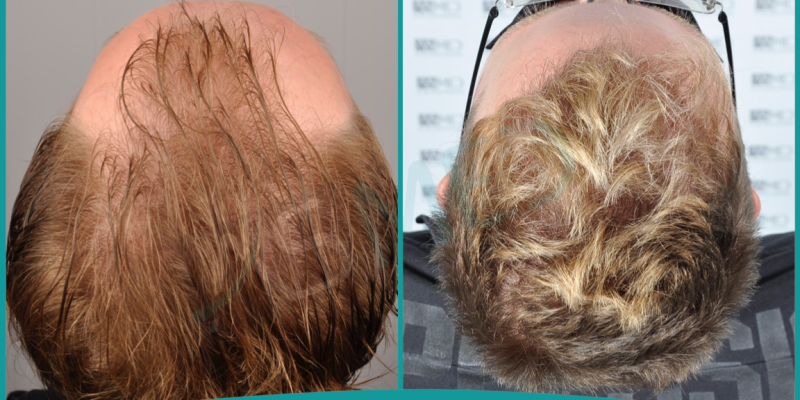
Hair Transplant After 10 Years
“How long do hair transplants last” is one of the most often asked questions by people who consider hair transplants. In most cases, a hair transplant will last your entire life. They are intended to be permanent, and individuals seldom require them to be redone. Following your transplant, your hair should begin to grow quickly. As for the question “how do hair transplants work”, hair transplants include removing healthy hair follicles from your body and implanting them on the bald areas. Then, implanted hair follicles promote hair growth. However, at the beginning of the post-surgery period, patients experience some hair loss, called shock hair loss. It is a normal part of the healing process, so, no need to be alarmed. Once the shock of hair loss stops, your new and healthy hair starts growing. Approximately one year after the hair transplant surgery, your hair becomes thick and long enough to become an inspiring sight.
Is A Hair Transplant Permanent?
While concerns and questions regarding “is a hair transplant permanent” are understandable. The follicles that have been transferred from a donor area of the scalp, ensure that they not only accept the transplants more quickly, but also integrate with the rest of your hair after the surgery and grow like them.
While persons with pattern baldness may face further hair loss in the future, this is typically treated with follow-up treatments in the areas of new hair loss. However, the importance of care of hair properly is unmatching. You could also increase the lasting effect of your hair transplant by taking vitamins following your operation.
Will I Need Another Hair Transplant in the Future?
Even though hair transplants are extremely successful, there is a possibility that your hair transplant will not be your last. Some patients might be advised by their doctor that they require repeated “sessions” of hair transplant surgery to obtain the desired outcomes. This could be because the area that is desired to undergo surgery is too large. Typically, when people are dissatisfied with their first hair transplant results, they prefer a second hair transplant as well. This could be because of the doctor’s skills, the scalp resisting new hair follicles, some medical problems, and so on. Regardless of the reason, you should not decide on a second or third hair transplant on your own.
Hair transplants are complicated and long-lasting processes that people have concerns about. The success of the operations is undeniable. However, it is normal to have many questions and doubts. We, as the Asmed team, are here to dissolve your concerns with proper attention and guidance. Our medical team at Asmed will help you along the way and make sure you have no concerns left. If you have any questions, please reach out to the Asmed team for assistance!